CONTENTS- 1. Discovery of magnets
2. Definition of magnet
3. Artificial magnets
4. Magnetic and Non-magnetic substances
5. Properties of a magnet
6. How to make a magnet
7. Cautions for safe keeping of magnets
8. Uses of magnets
1. Discovery of magnets
About 800 B.C. in ancient Greece a shepherd named ‘Magnes’ is credited to discover a natural magnet. While wondering with sheeps he found that a pull force from a rock is working on his stick at the bottom of which an iron cap was there. This rock was called ‘Magnetite’. Magnetite is a naturally occurring magnet.
Magnetite is made up of a chemical called iron oxide. It was known at that time that when a long piece of magnetite is freely suspended, it always comes to North-South direction. Since it used to lead and indicate directions, it was called as ‘lodestone’ which means leading stone.
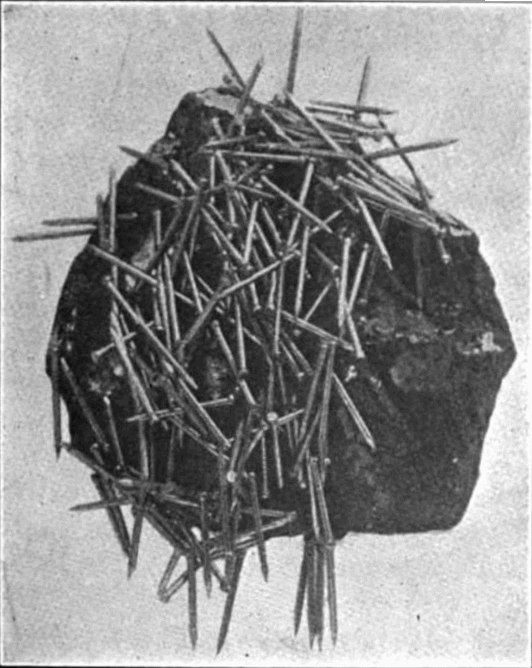
Lodestone , Source-Wikipedia
2. Definition of magnet
A substance that attracts objects made up of iron, cobalt and nickel is called as magnet. Magnets attract magnetic substances made up of iron, cobalt and nickel. Nonmagnetic substances like soil, stainless steel, wood, plastic, rubber etc are not attracted towards magnet.
The force of attraction or repulsion experienced by magnet or magnetic substance due to a magnet is called as magnetism.
3. Artificial magnets and their shapes – Artificial magnets are made from the same material to which they attract. Artificial magnets are made up of ‘Alnico’. Alnico is a material made up of Aluminum, Nickel and Cobalt. Artificial magnets are used in toys, motors, electric fans, speakers,
Artificial magnets are produced in different shapes. The common ones are –
{a} Bar magnets
{b} Horse-shoe shaped (U-shaped) magnets,
{c} Cylindrical magnets
{d} Ball-ended magnets/Dumb-bell shaped magnets
{e} Ring Magnets
{f} Button shaped magnets
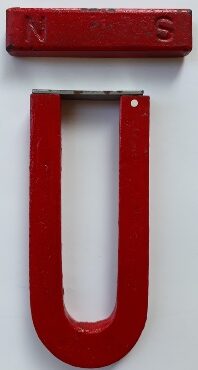
Bar Shaped and Horse shoe-shaped / U-Shaped Magnet
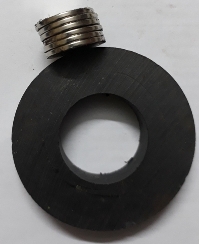
Ring shaped and Button shaped magnets
4. Magnetic and Non-magnetic substances- The substances that are attracted towards the magnet are called as magnetic substances.
e.g. Iron, Cobalt and nickel.
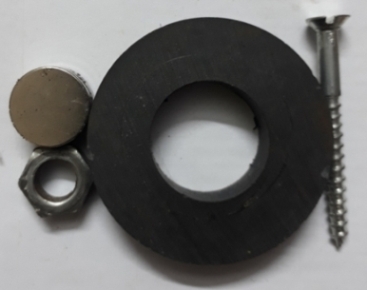
Magnetic substances
The substances that are not attracted towards the magnet are called as non-magnetic substances.
e.g.- Paper, Soil, Clothes, Leaves etc.
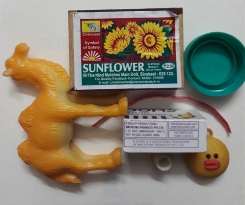
Non-magnetic substances
5. Properties of a magnet-Following are the properties of a magnet-
A. The strength of a magnet lies at it’s pole at the center between the poles magnetic strength is zero.
B. There are two ends of a magnet called as- North Pole and South Pole.
C. On freely suspending the bar magnet orient towards north-south direction.
D. The magnet has magnetic field around it where it’s magnetic force can be felt.
E. Like poles of two magnets repel each other while unlike poles attract each other.
North Pole-South pole = Attraction
South Pole-North pole = Attraction
North Pole- North pole = Repulsion
South Pole- South pole = Repulsion
F. Magnets lose their properties on heating, hammering and dropping on hard surface from a height. Improper keeping also weakens magnets. The magnets that lose their magnetic property are called demagnetized magnets.
G. When a small piece of iron or cobalt or nickel is brought near another magnet, it starts behaving like a magnet. This property of magnets is called as magnetic induction.
6. How to make a magnet-
Following are the steps of forming a bar magnet by our own-
- Near one end of an iron bar one pole of a bar magnet is placed.
- Without lifting the bar magnet it is moved up to the other end of the iron bar.
- The bar magnet is lifted and brought to the same end as in the beginning.
- The process is repeated 40-50 times. The iron bar is magnetized and has properties like a magnet.
7. Cautions for safe keeping of magnets
The magnets lose their magnetic properties on hammering, heating and if dropped on a hard surface from a height.
The bar magnets should always be kept in pairs. Their unlike poles should be kept together and a piece of wood or plastic should separate them. Two pieces of soft iron should be kept across their two ends.
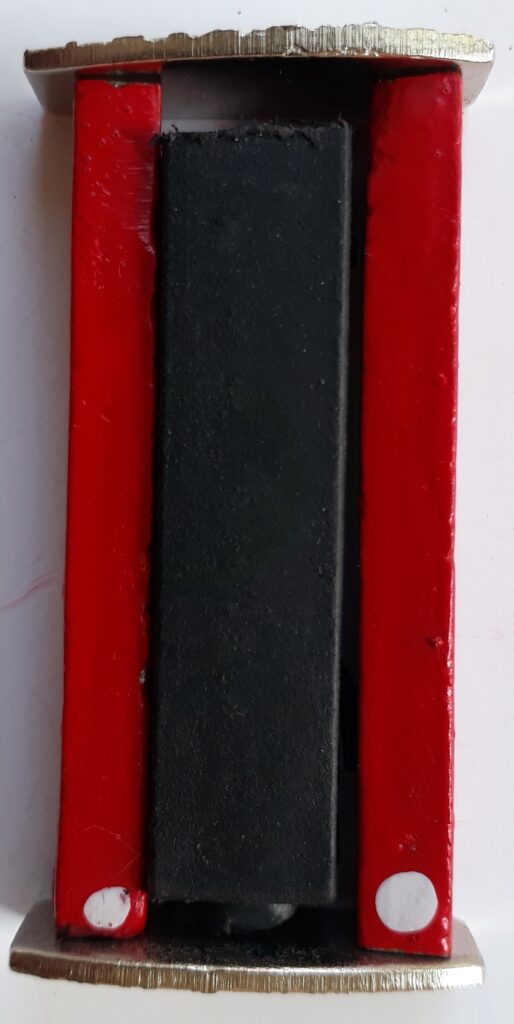
Safe keeping of magnets
Magnets should be kept away from C.D.s, mobile Phones, music systems, televisions and computers.
8. Uses of Magnet-Magnets are used for various purposes.
1. They are used in finding direction by magnetic compass.
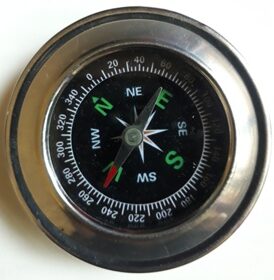
Magnetic Compass
2. They are used in speakers, loudspeakers, mobile phones and dynamos.
3. They are used in Motors and fans.
4. Magnets are used in separation of iron scraps from garbage or separation of magnetic substance from non-magnetic substance.
5. Magnets are used in toys and doors of refrigerators.
6. Magnets are used in magnetic therapy.
7. Magnetic strips that are used in A.T.M. Cards contain informations.
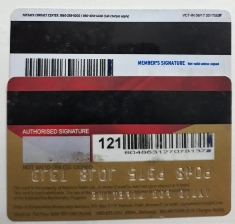
Magnetic Strips on cards
8. Magnets are used in Magnetic Resonance Imaging (M.R.I.).
9. Computer hard discs,Audio and video tapes use magnets to store data.
10. Magnets are used in radio, television and computers.
11. Magnets are used in dynamo.
9. Earth as A Magnet- When a bar magnet is freely suspended and left undisturbed; it orients itself into North-South direction. It is due to magnetic effect of the earth. The earth behaves as a huge magnet. The north pole of bar magnet shows the geographical south pole. Similarly, the south pole of bar magnet shows the geographical north pole.
EXERCISE QUESTIONS-
Q.1 Fill in the blanks.
(a) Artificial magnets are made in different shapes such as …………….., ……………… and ………………..
(b) The magnets which are attracted towards a magnet are called ………………………
(c) Paper is not a …………… material
(d) In olden days, sailors used to find direction by suspending a piece of ……………………
(e) A magnet always has …………….poles.
Ans- (a) bar, horse-shoe dumb-bell
(b) magnetic materials
(c) magnetic
(d) lodestone
(e) two poles
Q.2 State whether the following statements are true or false.
(a) A cylindrical magnet has only one pole.
(b) Artificial magnets were discovered in Greece.
(c) Similar poles of a magnet repel each other.
(d) Maximum iron fillings stick in the middle of a bar magnet when it is brought near them.
(e) Bar magnets are always pointed towards North-south direction.
(f) A compass can be used to find east-west direction at any place.
Ans-
(a) False (b) False
(c) True (d) False
(e) True (f) False
(g) True
Q.3 It was observed that a pencil sharpener gets attracted by both the poles of a magnet although its body is made of plastic. Name a material that might have been used to make some part of it.
Ans- A pencil sharpener has both plastic and iron blade. The blade of a pencil sharpens the pencils. Iron has magnetic property. So, a pencil sharpener gets attracted by the poles of a magnet.
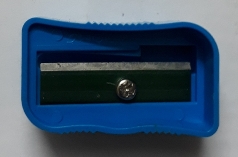
Sharpener
Q.4 Column I shows different positions in which one pole of a magnet is placed near that of the other. Column II indicates the resulting action between them for each situation. Fill in the blanks.
| Column I | Column II |
| N—N | …………………………. |
| N–_ | Attraction |
| S—N | …………………………. |
| _–S | Repulsion |
Ans-
| Column I | Column II |
| N—N | Repulsion |
| N–N | Attraction |
| S—N | Attraction |
| S–S | Repulsion |
Q.5 Write any two properties of a magnet.
Ans- The two common properties of a magnet are-
(a) A magnet attracts objects made up of iron, cobalt and nickel.
(b) A freely suspended bar magnet always orient itself in north-south direction.
Q.6 Where are poles of a bar magnet located?
Ans- The poles of a bar magnet are located at its ends.
Q.7 A bar magnet has no marking to indicate its poles. How would you find out near which end is its north pole located?
Ans- If we know the directions then its alright. Otherwise with the help of a magnetic compass the direction can be found. Now, the bar magnet having no marking of poles is freely suspended with help of a thread and it orients in north-south directions. The end which point towards north direction will be north pole and end which point towards south is its south pole.
Q.8 You are given an iron strip. How will you make it into a magnet?
Ans- An iron strip can be magnetized by using another magnet. Following are the steps of forming a bar magnet by our own-
- Near one end of an iron bar or iron nail one pole of a bar magnet is placed.
- Without lifting the bar magnet it is moved up to the other end of the iron bar.
- The bar magnet is lifted and brought to the same end as in the beginning.
- The process is repeated 40-50 times. The iron bar is magnetized and has properties like a magnet. It attracts the alpins.
Q.9 How is a compass used to find the directions?
Ans- A magnetic compass has a magnetic needle in a circular steel or aluminium casing. The magnetic needle is pivoted at a point so that it can freely rotate about it. The magnetic needle always orients to north-south direction. So, all the directions can be found. The compass is used by travelers, sailors and in vehicles.
Q.10 A magnet was brought from different directions towards a toy boat that has been floating in water in a tub. Effect observed in each case is stated in Column I. Possible reasons for the observed effects are mentioned in column II. Match the statements given in column I with those in column column II.
| S.N. | Column I | Column II |
| (a) | Boat gets attracted towards the magnet. | (i) Boat is fitted with a magnet with north pole towards its head. |
| (b) | Boat is not affected by the magnet. | (ii) Boat is fitted with a magnet with south pole towards its head. |
| (c) | Boat moves towards the magnet if north pole of the magnet is brought near its head. | (iii) Boat has a small magnet fixed along its length. |
| (d) | Boat moves away from the magnet when north pole is brought near its head. | (iv) Boat is made of magnetic material. |
| (e) | Boat floats without changing its direction. | (v) Boat is made of non-magnetic material. |
Ans- (a)–iv
(b) –v
(c) –ii
(d) –I
(e) –iii
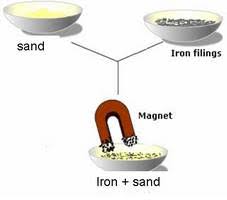
Proceedings in Life Sciences cialis generic